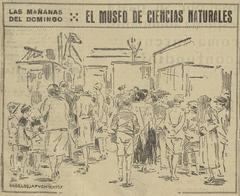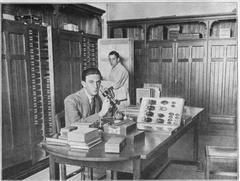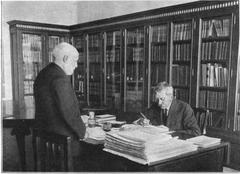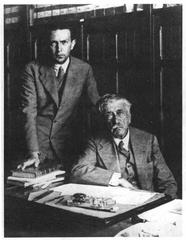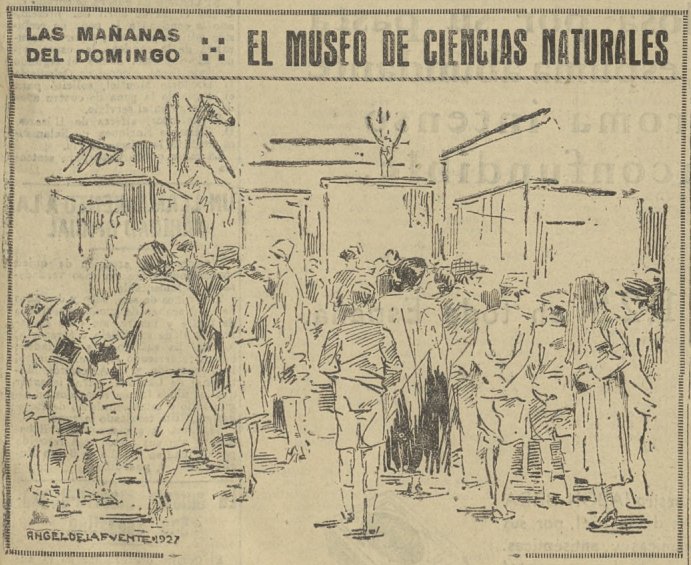
National Museum of Natural History Madrid: Visiting Hours, Tickets, and Visitor Guide
Date: 14/06/2025
Introduction
Nestled in the heart of Madrid, the Museo Nacional de Ciencias Naturales (National Museum of Natural Sciences, MNCN) is Spain’s leading institution for natural history. Founded in 1771 during the Enlightenment by King Charles III, the museum has evolved from the Real Gabinete de Historia Natural into a modern hub for research, conservation, and public education. Visitors can expect a journey through Earth’s biodiversity, geological history, and human evolution, showcased through millions of zoological, paleontological, mineralogical, and botanical specimens.
Whether you are a science enthusiast, family traveler, or cultural explorer, the MNCN offers extensive permanent collections, interactive exhibits, and special exhibitions. Highlights include the life-sized Diplodocus replica, the suspended whale skeleton, and rare fossils from sites such as Las Hoyas and Atapuerca. The museum is located in the architecturally striking Palacio de Exposiciones de las Artes e Industrias and is easily accessible by public transport. Admission policies are visitor-friendly, with discounts and online ticket options available.
This guide provides a detailed overview of the museum’s history, visitor information, ticketing, accessibility, must-see exhibits, and expert tips to help you make the most of your visit. Prepare to explore one of Madrid’s top historical sites and Spain’s premier natural sciences museum—where the wonders of nature and scientific heritage come alive. (Museo Nacional de Ciencias Naturales Official Website, Time Out Madrid, esmadrid.com)
Table of Contents
- Introduction
- Historical Overview and Development
- Practical Visitor Information
- Permanent Collections and Special Exhibitions
- Interactive and Educational Spaces
- Notable Specimens and Highlights
- Digital and Virtual Resources
- Accessibility and Visitor Amenities
- Travel Tips and Nearby Attractions
- Frequently Asked Questions (FAQ)
- Visitor Experience and Reviews
- Contact Information
- Conclusion and Call to Action
Historical Overview and Development
Origins and Early History (1771–1815)
Founded as the Real Gabinete de Historia Natural by King Charles III, the museum’s original collection stemmed from Pedro Franco Dávila’s donations, including minerals, fossils, zoological specimens, and ethnographic artifacts. Initially housed in the Palacio de Goyeneche, it served as a center for scientific study and public education, placing Spain among Europe’s leading nations in scientific advancement.
19th-Century Expansion
Reorganized as the Real Museo de Historia Natural in 1815, the institution transitioned to a public museum with an educational mission. The collections grew through scientific expeditions and donations, and in 1867, the museum’s original facilities were divided to create specialized institutions like the National Archaeological Museum and the Royal Botanic Garden.
20th Century and Modernization
By 1913, the museum was officially titled Museo Nacional de Ciencias Naturales, focusing on research, conservation, and education. Integration into the Spanish National Research Council (CSIC) in 1987 enhanced its scientific role, and the move to the Palacio de Exposiciones de las Artes e Industrias provided space for research labs, educational programs, and expansive galleries.
Collections and Significance
Today, the MNCN boasts millions of specimens across zoology, paleontology, mineralogy, and botany. Notable highlights include fossils from Las Hoyas and Atapuerca, rich zoological collections of Iberian and Mediterranean fauna, and significant mineralogical and botanical archives.
Cultural Heritage and Public Education
The museum is a vital center for scientific research and public outreach, offering workshops, guided tours, and interactive exhibitions that promote scientific literacy and appreciation for Spain’s natural heritage.
Practical Visitor Information
Visiting Hours
- Tuesday to Sunday: 10:00 AM – 5:00 PM
- Closed: Mondays, January 1, May 1, and December 25
(whichmuseum.com)
Ticket Prices
- General admission: €6
- Reduced admission (students, seniors): €3
- Children under 6: Free
- Purchase: Online via the official website or at the entrance
Accessibility
- Fully wheelchair accessible
- Elevators and ramps throughout
- Assistance for visitors with disabilities
Getting There
- Metro: Line 7, Gregorio Marañón station; also near Nuevos Ministerios
- Bus: Multiple lines stop on Calle de José Gutiérrez Abascal
- Parking: Limited street parking; nearby garages available
(esmadrid.com)
Best Times to Visit
- Weekday mornings are less crowded
- Check the calendar for special events and temporary exhibitions
Nearby Attractions
- National Archaeological Museum
- Royal Botanic Garden
- Paseo de la Castellana
Special Events and Guided Tours
- Guided tours in Spanish and English
- Educational workshops and temporary exhibitions
- Photography allowed for personal use (no flash or tripods)
- Food and drink only in designated areas
Permanent Collections and Special Exhibitions
Paleontology and Fossils
- Extensive fossil collection with over 10 million specimens
- Life-sized Diplodocus replica
- Suspended 20-meter whale skeleton
- Fossils from the Iberian Peninsula and beyond
(Time Out Madrid)
Zoology and Biodiversity
- Comprehensive collections of vertebrates and invertebrates
- Focus on Iberian fauna and exotic species
- Marine life displays and conservation messaging
Geology and Mineralogy
- Thousands of rocks, minerals, and meteorites
- Features the Stone Garden—an outdoor display of geological treasures
Human Evolution and Anthropology
- Hominid fossils, prehistoric tools, and life-sized dioramas
- Multimedia presentations on the story of human evolution
Botany and Plant Collections
- Spanish flora, ecological relationships, and conservation themes
Temporary and Special Exhibitions
- Rotating exhibits on biodiversity, climate change, and scientific research
- Frequent art-science collaborations
(Time Out Madrid)
Interactive and Educational Spaces
Children’s Discovery Areas
- Hands-on activities: fossil and mineral examination, simulated digs, animal adaptation games
Workshops and Guided Tours
- Regular workshops for all ages
- Guided tours available in multiple languages, enhancing the educational experience
Notable Specimens and Highlights
- Diplodocus replica (photo favorite)
- Whale skeleton (main hall centerpiece)
- Iberian lynx conservation display
- Rare meteorites and prehistoric tools
Digital and Virtual Resources
- QR codes on exhibits for additional content
- Virtual tours and educational resources available on the official website
Accessibility and Visitor Amenities
- Ramps, elevators, and adapted restrooms
- Audio guides for rent (Spanish and limited English)
- On-site shop with books and scientific kits
- Café with refreshments
Travel Tips and Nearby Attractions
- Address: Calle José Gutiérrez Abascal, 2, 28006 Madrid
- Metro: Gregorio Marañón (Lines 7 and 10), Nuevos Ministerios (Lines 6, 8, and 10)
- Other attractions: Prado Museum, Retiro Park, Royal Palace, Thyssen-Bornemisza Museum
(whichmuseum.com)
Frequently Asked Questions (FAQ)
Q: What are the visiting hours?
A: Tuesday to Sunday, 10:00 AM to 5:00 PM; closed Mondays and select holidays.
Q: How do I buy tickets?
A: Online via the official website or at the entrance.
Q: Is the museum accessible?
A: Yes, with lifts, ramps, accessible restrooms, and staff assistance.
Q: Are guided tours available?
A: Yes, regularly in Spanish and some in English.
Q: Is the museum family-friendly?
A: Yes, with interactive exhibits and discovery areas for children.
Q: Can I take photographs?
A: Yes, except where restrictions are posted (no flash or tripods).
Visitor Experience and Reviews
The museum is highly rated for its scientific depth, educational approach, and broad collections. The dinosaur skeletons and human evolution exhibits are particular favorites. Some visitors note that parts of the museum can be crowded and that English-language materials may be limited, but the central location and unique collections make it a top destination.
(museumsexplorer.com, whichmuseum.com)
Contact Information
- Address: Calle José Gutiérrez Abascal, 2, 28006 Madrid, Spain
- Phone: +34 914 111 328
- Email: [email protected]
- Website: Museo Nacional de Ciencias Naturales
Conclusion and Call to Action
The National Museum of Natural Sciences in Madrid is a vibrant center for science, culture, and education. Its extensive collections, accessible facilities, and central location make it a must-visit for travelers, families, and anyone interested in the natural world.
Plan your visit by consulting the official museum website for the latest updates on hours, tickets, and special events. Enhance your experience with the Audiala app, offering personalized tours and interactive maps. Stay connected through social media for news and educational updates, and explore related articles on Madrid’s cultural landmarks to enrich your trip.
Suggested Visuals:
- Diplodocus skeleton at National Museum of Natural Sciences Madrid
- Stone Garden geological displays at National Museum of Natural Sciences
- Map of National Museum of Natural Sciences location in Madrid
Internal Links:
- Articles on the Prado Museum, Royal Palace, and other Madrid museums
- Tips for using Madrid public transportation
- Guides to family-friendly activities in Madrid
References
- Museo Nacional de Ciencias Naturales Madrid: Visiting Hours, Tickets & History of Spain’s Premier Natural History Museum, 2024 (Museo Nacional de Ciencias Naturales Official Website)
- National Museum of Natural Sciences Madrid: Visitor Guide, Tickets, Hours, and Highlights, 2024 (Museo Nacional de Ciencias Naturales Official Website)
- National Museum of Natural Sciences Madrid: Visiting Hours, Tickets, Exhibits, and Visitor Guide, 2024 (Museo Nacional de Ciencias Naturales)
- National Museum of Natural Sciences Visiting Hours, Tickets, and Guide to Madrid’s Historic Site, 2024 (esmadrid.com)
- Time Out Madrid, 2024 (Time Out Madrid)
- Spain.info: National Museum of Natural Sciences, 2024 (spain.info)
- Yellow Moon Tours: A 5-Step Guide to Visiting the Natural History Museum, 2024 (yellowmoontours.com)
- WhichMuseum.com: National Museum of Natural Sciences of Spain Madrid, 2024 (whichmuseum.com)
- Museumsexplorer.com: Museum of Natural Sciences National Museum of Natural Sciences in Madrid, 2024 (museumsexplorer.com)
